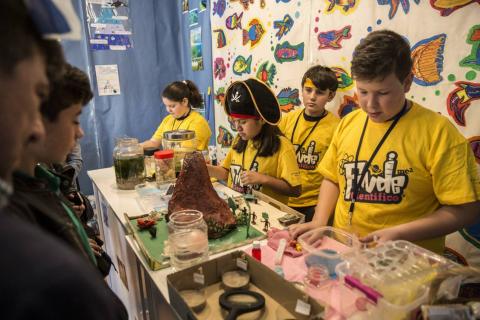Not everything published in journals such as Science and Nature is scientific research, nor is everything they publish peer reviewed. As in traditional media, there are different genres. Moreover, researchers use different designs with very different objectives, advantages and limitations. Here are some of the most important ones.
Genres in scientific publications
1. Research article (original article, research article, research, article...)
This is an article with a classic structure (introduction, methods, results, discussion, etc.) that provides new and relevant data on a given topic and has been peer-reviewed.
2. Opinion
An article in which the opinion of one or more experts is expressed on a subject close to their field of knowledge. This opinion is based on the experience of the researchers and the available data and literature. Letters and Commentaries are examples of opinion articles.
3. Letters (short reports, letters, correspondence, brief communications...)
Letters to the editor similar to those of traditional newspapers. They include brief comments of interest on academic, public interest or even political topics. They can provide more or less anecdotal data that may be of interest and help other researchers in their further research. They are not always peer-reviewed and the review is not as thorough as with research articles.
4. Review articles
Comprehensive summaries of a line of research that may include references to more than a hundred previous studies. They are usually written by experts in the field and provide an overview of the state of the field and its future. They are very useful for researchers, but also for science journalists because they serve as an introduction to an area of knowledge. They are usually commissioned by the journal itself.
5. Commentary
Opinion articles that seek to provoke and encourage a call to action on important scientific, political, ethical and social issues. To this end, they propose a solution to the problem raised. They are usually commissioned by the journal itself.
6. Perspectives
These accompany the research articles that the journal's editors consider most important. In them, an expert in the field who has not participated in the study explains its relevance and contextualises it. They are very useful to better understand the importance of a paper. They are usually commissioned by the journal itself.
7. News
Science journals also publish journalistic articles, reports and even surveys. They are written by science journalists at the request of the journal.
8. Editorials
Unsigned article in which the journal itself takes a position on a topic of scientific, social or political interest.
9. Other
There are other less frequent genres such as Methodologies (explaining a new procedure or protocol) and Book reviews, which are not usually as relevant for science journalists. Some science journals also publish surveys, similar to those carried out by other media, on topics of academic interest such as harassment.
Other types of publications
1. Preprint
Prior to publication, studies may be shared by authors in repositories such as medRxiv, bioRxiv and arXiv. These preliminary papers are known as preprints, they have not passed peer review and can be uploaded with few controls. Not to be confused with postprints, articles that have passed peer review but are shared before going through the journal's layout and editing process, usually because of the importance of their results.
2. Thesis
Original research work carried out by a doctoral student with the aim of obtaining a doctoral degree. The thesis must be defended before a panel of doctors. Sometimes theses can be the seed that gives rise to one or more articles published in journals after passing peer review.
3. Communication at a conference
This is a condensed version of a scientific article in the form of a presentation or poster that researchers present to their peers at a conference. It may refer to an already published, peer-reviewed study, or advance preliminary data that is still being worked on.
4. Survey
Scientific journals such as Nature conduct questionnaires on topics such as scientific harassment and then publish the findings in a journalistic format.
5. Report
A rare genre in scientific journals. These are works with a more flexible approach that combine analysis and reflection, collect data and review the existing literature on a topic. They are often carried out by societies and public and private organisations.
Types of study
1. Experimental study
A trial in which the researcher artificially manipulates a factor of interest in order to study it.
2. Observational study
In contrast to the experimental study, here the researcher does not manipulate any factor, but simply measures the variables of interest in different populations or individuals.
3. Case study
A study that focuses on a single specific case of a person or group. It is widely used in the social sciences and medicine. For example, by focusing on a patient who has had a unique picture of a disease that deserves to be shared with the academic community.
4. Modelling
The study is a mathematical model that attempts to reflect the real world using algorithms. It is a simplified scheme that can be useful for studying issues that are complex to carry out in the real world.
5. Clinical trial
Experimental study widely used to evaluate new drugs. Ideally, it should be controlled and randomised in order to be able to compare between groups of participants receiving a placebo and those receiving the treatment.
6. Systematic review and meta-analysis
Long, technical scientific articles that summarise all the available evidence on a topic in order to strengthen the research. This is carried out by means of a prior protocol to avoid selection bias. Meta-analysis is a type of systematic review in which the conclusions are presented quantitatively: it is a study of studies that seeks to reach more statistically robust conclusions by combining several of them.
Other terms of interest
1. Peer-reviewed
It means that the article has passed the peer review process. In this, two or three expert reviewers in the field who have not participated in the research assess the rigour and novelty of the article, as well as its scientific relevance and suitability to the subject matter of the journal, to decide whether it deserves to be published in the journal.
2. Not peer-reviewed
This means that the article has not undergone a peer review process, so it has not been reviewed by expert editors in the field who assess the rigour, novelty and relevance of the article. This may be because the text has not yet passed this process, although it may do so in the future (as in the case of preprints) or because the format of the article is not compatible with this process (such as opinions and letters).
3. Randomised/non-randomised
Randomisation is the procedure by which researchers assign study participants to different groups randomly, without intervening in the process, in order to avoid possible biases and to improve the comparability of the results of the different groups. Often the selection is done in a double-blind fashion, with neither researchers nor participants knowing which group they are in.
4. Humans
The study has been conducted with human volunteers.
5. Animals
The study has been conducted in vivo with animal models. These model organisms, such as laboratory mice, may have been genetically manipulated in order, for example, to test for a particular disease or gene.
6. In vitro
The study has been carried out outside a living model, in a test tube or other laboratory material containing cells. Because their results are not obtained in an animal or human body, they are not considered to be extrapolable to real conditions, but may serve as a bridge before further research with animals or humans.




